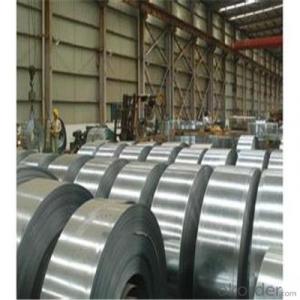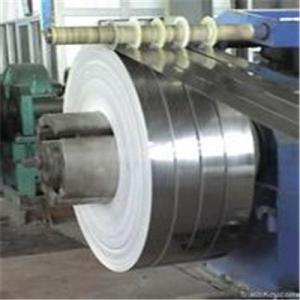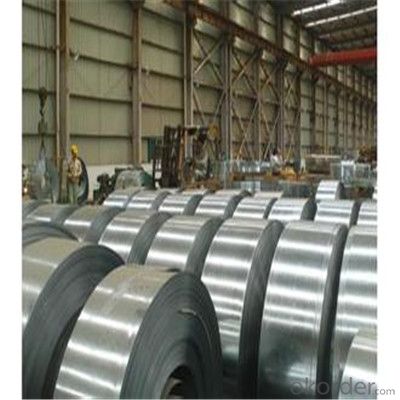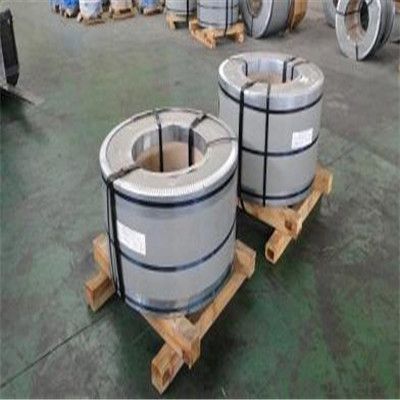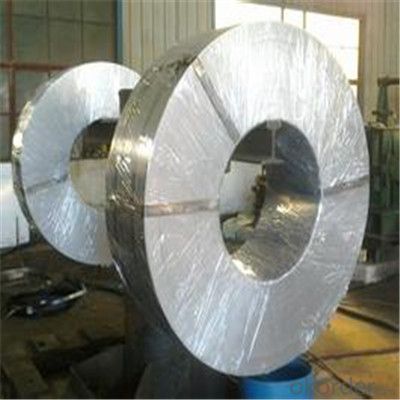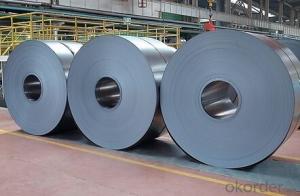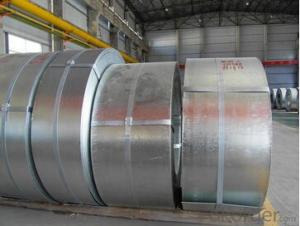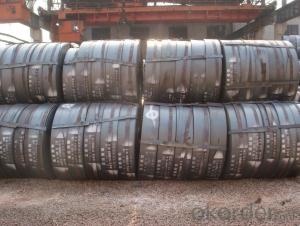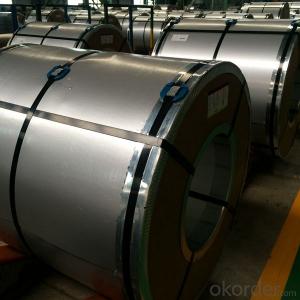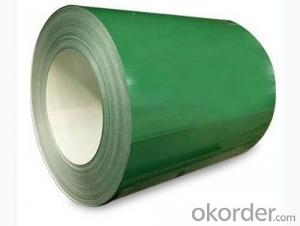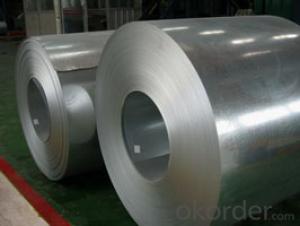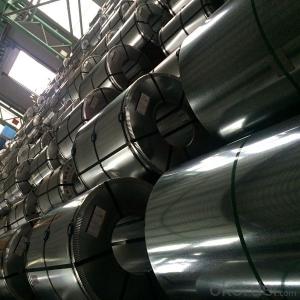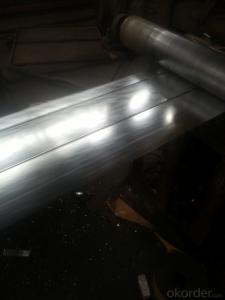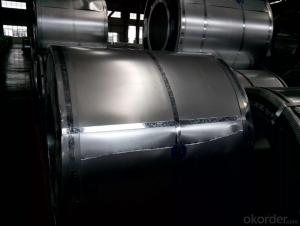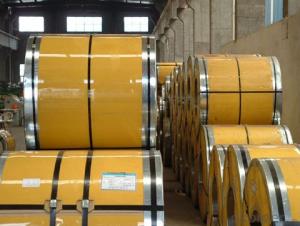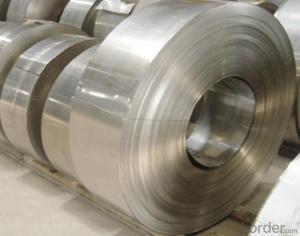Galvanized Steel Strip Coils DX51D in China
- Loading Port:
- Tianjin
- Payment Terms:
- TT OR LC
- Min Order Qty:
- 55 m.t.
- Supply Capability:
- 22232332 m.t./month
OKorder Service Pledge
OKorder Financial Service
You Might Also Like
Specification
Applications of Steel Strip Coils:
1:Chemical industry equipment, Industrial tanks
2:Medical Instruments,Tableware, Kitchen utensil,kitchen ware
Festures of Steel Strip Coils:
1. Each coil is closely covered by oil paper or plastic film.
2. Outside it is firmly packed with sack cloth or compound paper.
3. Steel strap or PP strap to pack the outside to ensure safety.
Specifications of Steel Strip Coils:
| Standard | Galvanized Steel Coil Grade | Zinc Coating | Width | Thickness | Length | Capacity/Year |
| JIS G3302 | SGCH/SGCC-SGC570/SGHC-SGH340 | Z40-275g | 30-914mm | 0.3-4.0mm | Coil | 1,00,000Ton |
| EN 10346 | DX51D+Z/DX53D+Z/S220GD-S550GD | Z40-275g | 30-914mm | 0.3-4.0mm | Coil | 1,00,000Ton |
| ASTM A653 | CS-B/SS255-550 | Z40-275g | 30-914mm | 0.3-4.0mm | Coil | 1,00,000Ton |
Images of Steel Strip Coils:
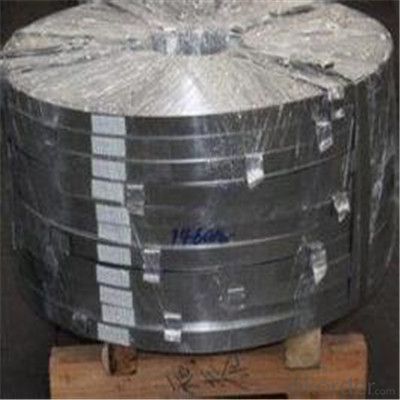
FAQ
1.What's your MOQ?
25MT, it is for one container.
2.Do you have QC teams?
Yeah, sure, our QC team is very important, they will keep the quality control for our products.
3. What's your normal delivery time?
Our delivery time about 10-20days for standard sizes, if you have other requirements like hardness and width ,it is about 20-40days.
- Q: What are the common surface finishes for steel strips to improve corrosion resistance?
- The common surface finishes for steel strips to improve corrosion resistance include galvanizing, electroplating, powder coating, and painting.
- Q: What are the common surface treatments for steel strips to improve wear resistance?
- Some common surface treatments for steel strips to improve wear resistance include heat treatment, such as through hardening or case hardening, and various types of coatings, such as nitriding, chrome plating, or ceramic coatings.
- Q: How are steel strips processed for waterjet cutting?
- Steel strips are typically processed for waterjet cutting by first ensuring that the strips are clean and free of any debris. Then, they are securely clamped or fixtured onto a waterjet cutting table. The waterjet machine is programmed with specific cutting parameters, such as cutting speed and pressure, based on the thickness and type of steel being cut. The waterjet nozzle moves along the designated cutting path, delivering a high-pressure jet of water mixed with abrasive particles to precisely cut through the steel strips. This process allows for accurate and intricate cuts to be made on the steel strips without any heat-affected zones or distortion.
- Q: How are steel strips processed for interlocking?
- Steel strips are processed for interlocking by undergoing a series of steps including cutting, shaping, and forming. This involves using specialized tools and machinery to create precise interlocking patterns on the steel strips, ensuring a secure and seamless fit when they are interlocked together.
- Q: How are steel strips protected against rust and corrosion during storage and transportation?
- Steel strips are protected against rust and corrosion during storage and transportation through various methods, such as applying protective coatings, using rust inhibitors, and implementing proper packaging and handling techniques.
- Q: What is the electrical conductivity of a steel strip?
- The electrical conductivity of a steel strip can vary depending on the specific type of steel and its composition. Generally, steel is considered to be a poor conductor of electricity compared to metals such as copper or aluminum. However, it still possesses some level of electrical conductivity due to the presence of free electrons within its structure. This conductivity is typically lower than that of other metals, meaning that steel strip is not commonly used for applications that require high electrical conductivity.
- Q: What are the dimensions of a typical steel strip?
- The dimensions of a typical steel strip can vary depending on its intended use and industry standards. However, common dimensions for a steel strip include a width ranging from 0.5 inches to 36 inches and a thickness ranging from 0.003 inches to 0.25 inches.
- Q: What are the chemical analysis techniques for steel strips?
- Steel strips can undergo various chemical analysis techniques to determine their composition and properties. These techniques encompass: 1. Optical Emission Spectrometry (OES): By exciting the elements within the steel sample through a high-frequency spark, the emitted light is analyzed to ascertain the elemental composition of the steel strip. 2. X-ray Fluorescence (XRF): Employing non-destructive methods, XRF involves bombarding the steel strip with X-rays to prompt the emission of characteristic fluorescent X-rays from the steel's atoms. These emitted X-rays can then be measured to determine the elemental composition. 3. Inductively Coupled Plasma Spectrometry (ICP): ICP involves ionizing the steel sample's elements using high-energy plasma, followed by detection and quantification of the ionized elements using a mass spectrometer. This allows for precise determination of the elemental composition. 4. Atomic Absorption Spectrometry (AAS): AAS entails measuring the absorption of light by specific atoms within the steel strip. By comparing the absorption of light at particular wavelengths to calibration standards, the concentration of elements can be determined. 5. Carbon and Sulfur Analysis: Analyzing carbon and sulfur content is crucial for steel strips. Combustion techniques such as LECO or combustion-infrared methods involve burning the steel strip and measuring the gases released to determine the carbon and sulfur content. 6. Differential Scanning Calorimetry (DSC): DSC analyzes the thermal properties of steel strips. By measuring the heat flow into or out of the steel strip as temperature changes, valuable information about phase transitions, purity, and thermal stability can be obtained. These examples represent only a fraction of the chemical analysis techniques commonly employed for steel strips. The choice of technique depends on the specific analysis requirements, objectives, and the availability of equipment and expertise.
- Q: What are the forming processes used for steel strips?
- There are several forming processes that are commonly used for steel strips. These processes include hot rolling, cold rolling, and annealing. Hot rolling is a process in which the steel is heated to a high temperature and then passed through a series of rollers to reduce its thickness and shape it into a strip. This process is typically used for producing large quantities of steel strips with a consistent thickness and shape. Cold rolling, on the other hand, is a process in which the steel is passed through a series of rollers at room temperature to reduce its thickness and improve its surface finish. Cold rolling is often used to produce steel strips with a high degree of precision and a smooth surface. Annealing is a heat treatment process that is used to soften the steel and improve its ductility. This process involves heating the steel to a specific temperature and then slowly cooling it, which helps to relieve internal stresses and improve the material's mechanical properties. Annealing is often used after the rolling processes to ensure that the steel strips have the desired properties. In addition to these forming processes, there are also other secondary processes that may be used to further shape and finish the steel strips. These processes can include cutting, slitting, and coating, among others, depending on the specific requirements of the application. Overall, the forming processes used for steel strips aim to produce high-quality, accurately shaped strips that meet the desired specifications for a wide range of applications in various industries.
- Q: What are the different heat treatments applied to steel strips?
- There are several heat treatments applied to steel strips, including annealing, tempering, quenching, and normalizing.
Send your message to us
Galvanized Steel Strip Coils DX51D in China
- Loading Port:
- Tianjin
- Payment Terms:
- TT OR LC
- Min Order Qty:
- 55 m.t.
- Supply Capability:
- 22232332 m.t./month
OKorder Service Pledge
OKorder Financial Service
Similar products
Hot products
Hot Searches
Related keywords
